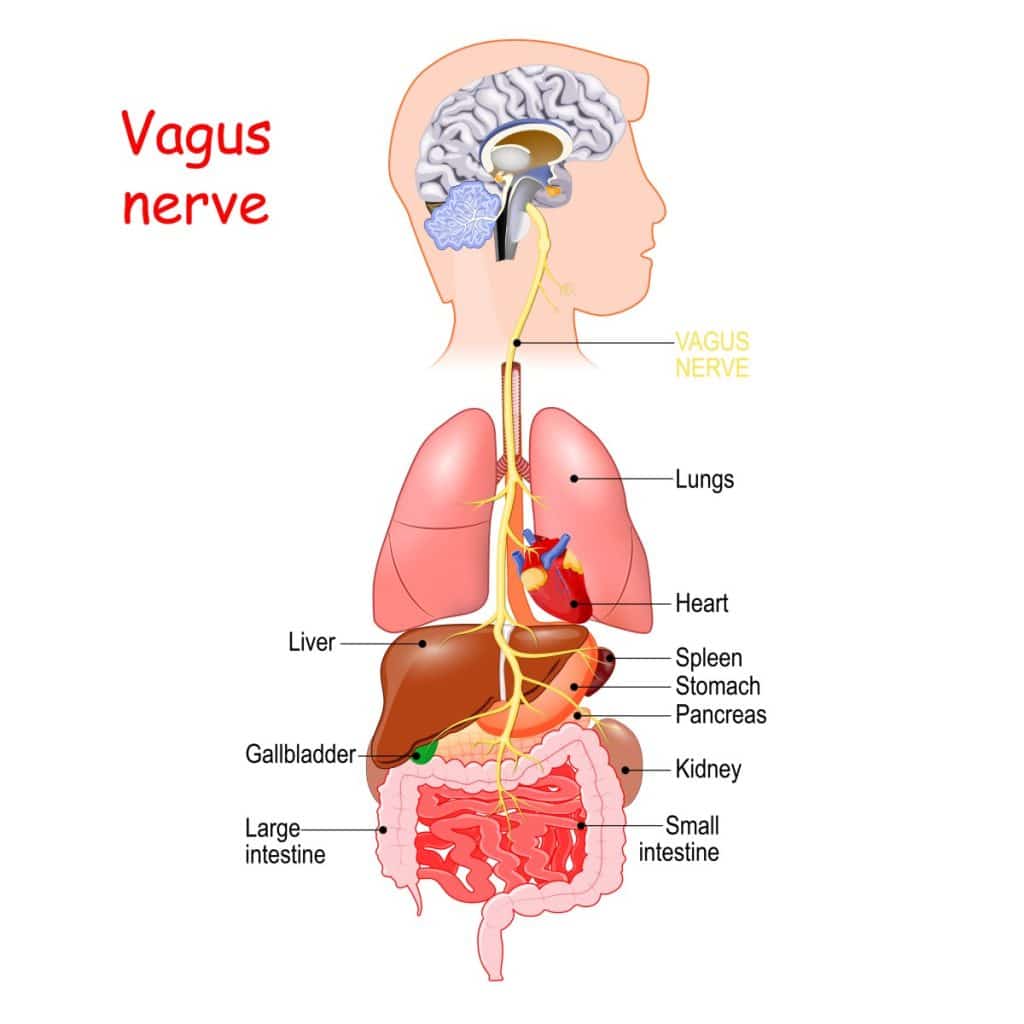Nerve Damage Is a Complex and Catastrophic Injury
A quick Google search of the words “nerve damage” brings a slew of links to “peripheral nerve injury” (and other similar terms). An injury to these nerves is typically associated with numbness or tingling, or even chronic pain. Aunt Joan’s sciatica? That’s a peripheral nerve injury, usually caused by a herniated disk. Your carpal tunnel? That’s caused by peripheral nerve damage, too.
Most folks don’t really understand how complex nerve damage is, or how wide-ranging a nerve injury can be. (For the record, insurance companies do; they’ll just try to convince the people on a jury that it’s not that big of a deal.) Carpal tunnel and sciatica are painful, sure – but they can usually be managed with some light stretching and cortisone shots. What we’re talking about when we say “catastrophic nerve damage” is a much more complex issue.
How the nervous system works in the body
Your nervous system has two main components: the central nervous system, which is comprised of your spinal cord and your brain, and your peripheral nervous system, which is everything EXCEPT the brain and spinal cord. All these nerves transmit signals back and forth between the brain.
Your peripheral nervous system also has two main components: the somatic nervous system, which controls all your senses AND your mobility, and your autonomic nervous system, which controls all your organs. In fact, your “flight reflex,” your ability to relax, and your ability to digest food are all the result of your autonomic nervous system.
These distinctions matter for a couple of reasons:
- A central nervous system injury is a traumatic brain injury or a spinal cord injury… and that’s it. They’re both catastrophic injuries that can alter a person’s life forever, but they’re the only two types of central nervous system injuries you can sustain.
- Peripheral nerve injuries can vary in severity, which means you may be completely fine in a couple of weeks OR you may find yourself unable to walk, talk, or even breathe on your own.
The vagus nerve and trauma
To understand just how catastrophic this damage can be, we turn to the vagus nerve. It looks like this:

The vagus nerve is a cranial nerve, which means it connects from your brain to your heart and digestive systems. According to the Cleveland Clinic, your vagal nerves “play important roles in involuntary sensory and motor (movement) functions, including:
- Digestion.
- Heart rate, blood pressure and respiration (breathing).
- Immune system responses.
- Mood.
- Mucus and saliva production.
- Skin and muscle sensations.
- Speech.
- Taste.
- Urine output.”
The vagal nerves are a very big deal, to put it mildly.
They can also cause myriad problems if they’re damaged because of trauma. For example, if a person is in a catastrophic car crash – jaws of life, multiple fire trucks, emergency triage on the scene type of car crash – the vagus nerve can be severed, either as a result of the impact or during the surgery which may save a victim’s life. If it is, the injury is permanent, and that means your brain may not longer be able to get messages to your internal organs. As explained by the Fred Hutch Cancer Center, a vagus nerve injury “can result in loss of speech, difficulty swallowing, abnormal heart rate, and gastroparesis” (the process which empties your stomach). And these complications can result in the need for:
- Feeding tubes
- Respiratory assistance (via breathing tube or other apparatus)
- Lifetime medication (to control blood pressure)
- Pacemakers (to address problems with an abnormal heart rate)
- Catheters and colostomy bags
“Fun” fact: damage to the vagus nerve can also lead to syncope, a fancy word for fainting. It can also trigger tunnel vision, excessive sweating, tinnitus, and nausea. Fainting will almost certainly lead to falling, and falls are a leading cause of head and brain trauma.
We point this out because even if you’re lucky enough not to sever the vagus nerve in an accident or incident of some kind, any damage can have additional effects that cause harm.
In short, when we see someone has suffered “nerve damage,” especially after an explosion in an oil field or as a result of a truck accident, we know it often means so much more than the damage to your limbs. Those types of injuries are devastating enough, but damage to the peripheral nervous system, and in particular to cranial nerves or autonomic nerves, is even worse. Losing the use of an arm is survivable; losing the ability to digest food or breathe without assistive devices may not be.
Neurogenic skeletal muscle atrophy
Neurogenic atrophy (or denervation atrophy) is another potential risk of peripheral nerve damage. It can be the result of a crushing injury, and it specifically affects the muscles which are connected to nerves. Essentially, neurogenic atrophy is nerve-related muscle wastage. Per the Cleveland Clinic:
Neurogenic atrophy is caused by an injury or disease affecting nerves that connect to your muscles. When these nerves are damaged, they can’t trigger the muscle contractions that are needed to stimulate muscle activity. When your muscles don’t contract, your body thinks you don’t need them anymore. So your body starts breaking them down, which causes them to decrease in size and strength.
Neurogenic atrophy can also affect bone mass. This is because your bones stay healthy in part because of your muscles. If you develop neurogenic atrophy in your legs, for example, those bones can become more fragile in time, which increases the risk of a break/fracture.
The best known treatment for this condition is electrical stimulation, but it won’t ever heal. Furthermore, people with neurogenic atrophy are at a greater risk of contracture, a condition where your muscle tissue becomes fibrous and hard. (Survivors of severe burn injuries are also at risk of contracture.)
This atrophy can occur anywhere in the body, depending on which nerves are damaged – including, of course, to the vagal nerves.
Making a claim for compensation for a nerve injury
When you suffer an injury or loss as a result of someone else’s negligence, you can file a personal injury lawsuit against the responsible party or parties. The largest component of any claim is the tangible costs of the injury: your medical expenses, your lost wages, and any property damage you sustained.
But the truth is that nerve injuries complicate even this part of a lawsuit, because the full extent of the losses may not be known right away. Your health can also worsen over time, necessitating even more medical treatment. Peripheral nerve damage can require multiple surgeries even if the actual nerve cannot be fixed. You are going to need physical and occupational therapy even if the nerve cannot heal, so that your muscles don’t waste away. You’ll need to address bone fragility, too, to reduce the risk of fracture. You may need assistive medical devices, from wheelchairs to feeding tubes, to ensure survival.
Insurance companies know all of this. They know what kind of uphill battle you and your family are going to face. They also know that peripheral nerve damage can shorten lifespan, so they’re going to try to lowball you on a settlement offer.
It doesn’t matter how much you like your agent; insurance companies have actuarial tables that they use to pinpoint the exact worth of a human life, and we assure you – they will use them to squeeze every dime they can out of your pocket. They’ll throw up their hands and say they can’t do anything, because this is what the numbers say.
You don’t have to take it. And you shouldn’t accept any offer before you speak to one of our Minot injury lawyers. Larson Law Firm, P.C. is ready and able to fight for a better award, and to take your case to a jury if that’s what is best for you, your family, and your future needs. To schedule a free consultation, give us a call or fill out our contact form. We’re based in Minot but have additional offices in Fargo and Bismarck.

Mark Larson is a Certified Civil Trial Specialist and Certified Civil Pre-Trial Specialist focusing on personal injury, car accidents, wrongful death, and oil field claims. Since 1979, Larson Law Firm has served the injured throughout North Dakota. Read more about Mark V. Larson.
